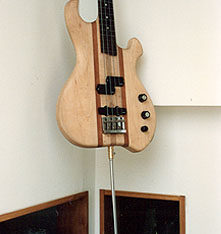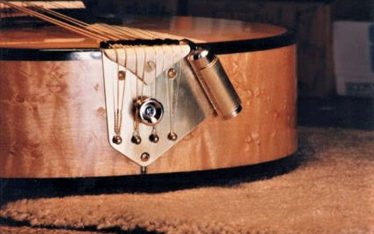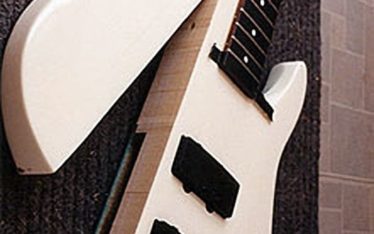Jazz Bass Guitar | Fender
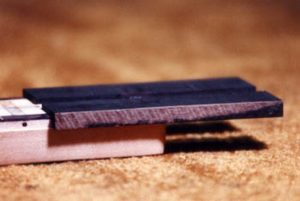
Converting a fretted bass to fretless is common, but this case is unusual. Usually, the fret slots are filled with wood or resin to do the conversion. But this owner, a former upright bass player, wanted a plain ebony fingerboard with a small radius just like an upright bass. And he also wanted a fingerboard two octaves long.
The truss rod runs through the neck in the center near the fretboard, so it was difficult to install one thick piece of ebony rounded on the upper side like an upright bass. So we tried to make it look like an upright bass neck using five pieces of ebony. We made good use of the binding channel on both sides of the neck.
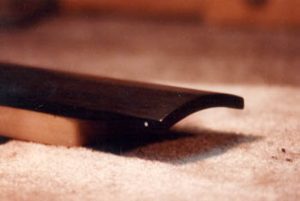 A regular jazz bass neck is 20 frets long, so the fretboard had to be extended by four more frets.
A regular jazz bass neck is 20 frets long, so the fretboard had to be extended by four more frets.
After the original fretboard and binding were removed, two pieces of ebony were mounted on both sides of the truss rod for the extension.
After leveling these pieces of ebony down to the maple, one long piece of ebony was glued on the neck. Next, both sides of the new fretboard were trimmed down to the binding channel level, and the thin ebony binding was glued in place.
Then the top and sides of the new fretboard were shaped like an upright bass neck. After that I shaved the under side of the extended part following the fretboard radius. It now looks as if the upright bass neck is on the jazz bass neck, doesn’t it?
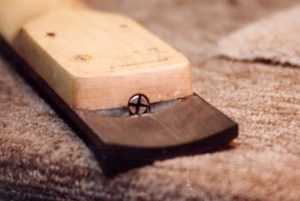 You can see the detail better when you look at the instrument’s underside. It looks like one curved ebony fretboard, but it consists of five pieces of ebony: one long piece as the actual fretboard, two extended parts of ebony, and two thin pieces of ebony as the binding. In this way you can retain access to the truss rod.
You can see the detail better when you look at the instrument’s underside. It looks like one curved ebony fretboard, but it consists of five pieces of ebony: one long piece as the actual fretboard, two extended parts of ebony, and two thin pieces of ebony as the binding. In this way you can retain access to the truss rod.
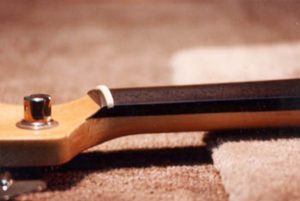 When you look at it from the peghead, you can easily tell there are three different parts of ebony except for the extended part. As you can see, the underside of the fretboard is flat.
When you look at it from the peghead, you can easily tell there are three different parts of ebony except for the extended part. As you can see, the underside of the fretboard is flat.
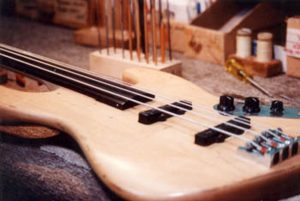 The two saddles for the D and A strings were set much higher than a normal jazz bass to follow the fretboard radius, and the white position dots were set at the 12th and 24th frets.
The two saddles for the D and A strings were set much higher than a normal jazz bass to follow the fretboard radius, and the white position dots were set at the 12th and 24th frets.
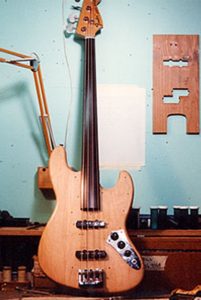
When you look at the finish photo, it doesn’t look so impressive, but this repair work was creative and fun. So I was happy and the owner was very happy, too. This is one of the most interesting and memorable modifications that I’ve done so far.







